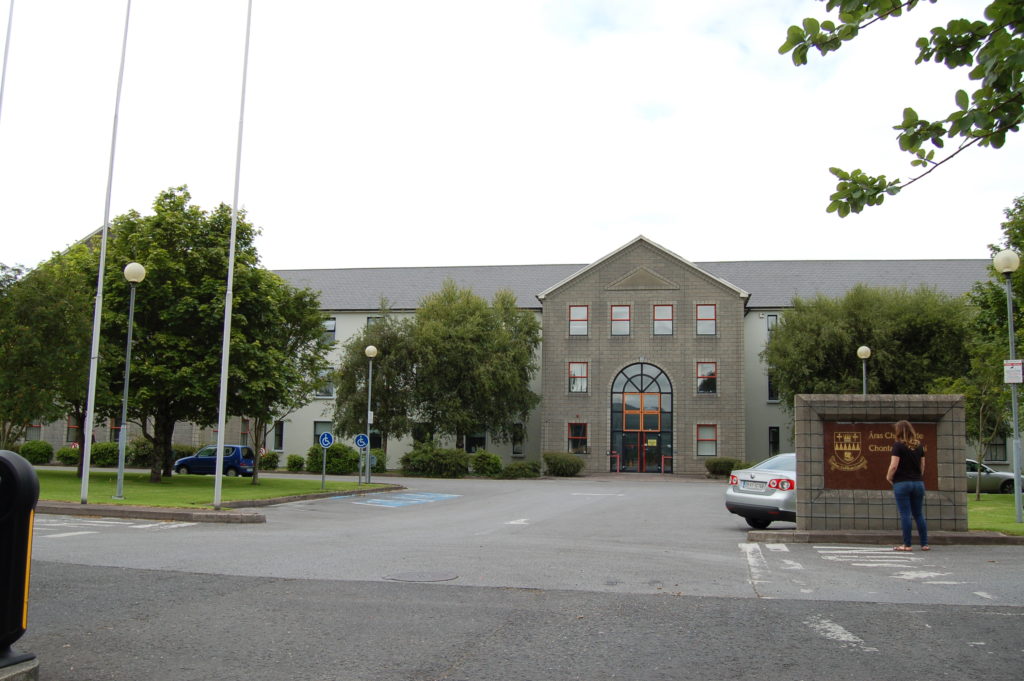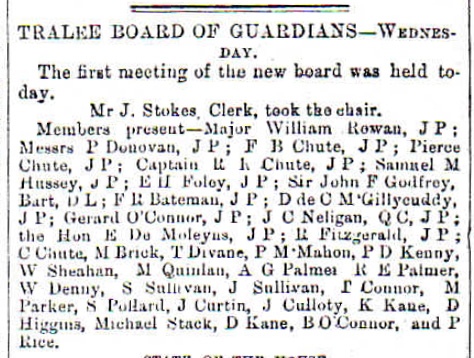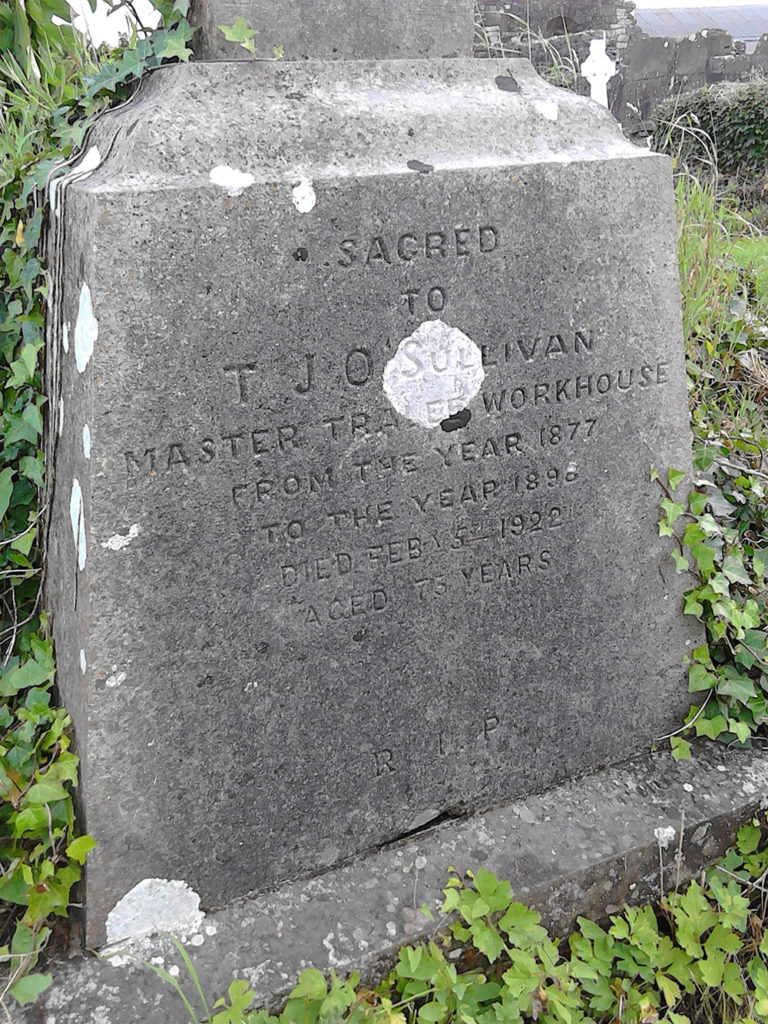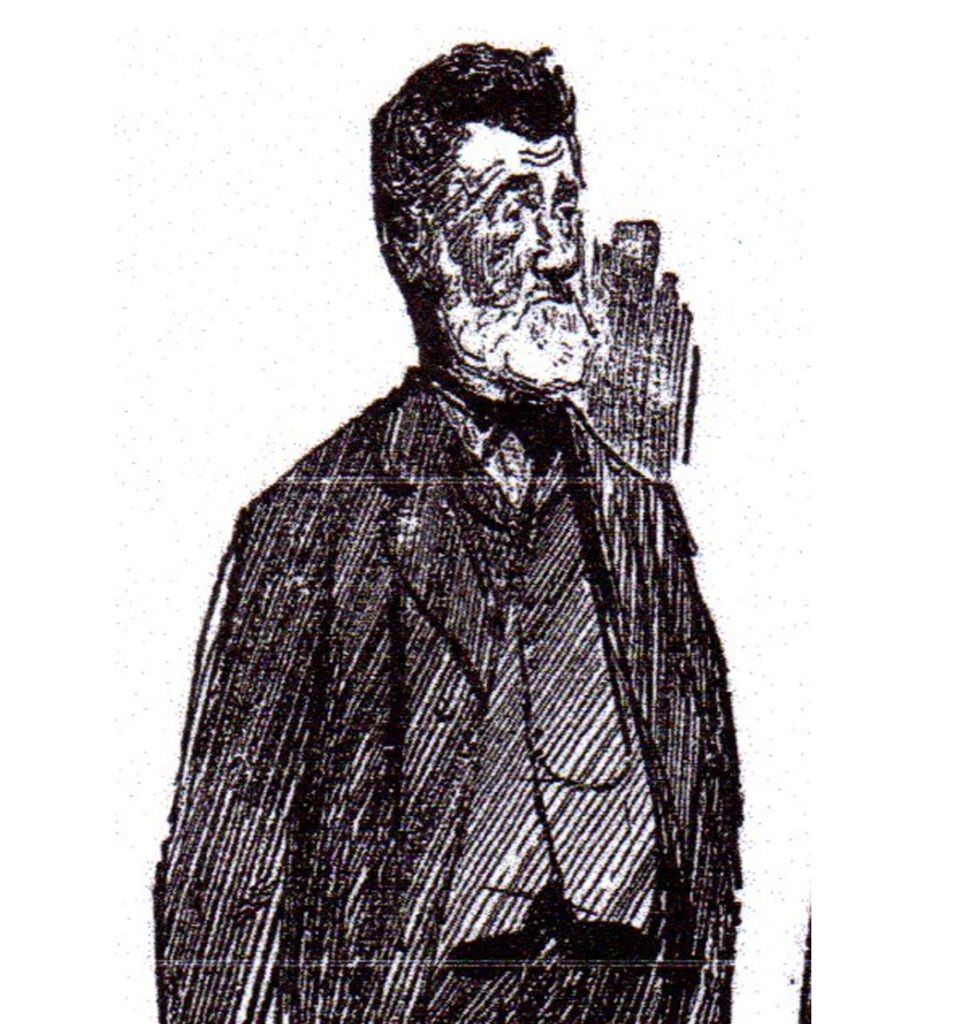The hive contains more than it can support ... the excess must either perish of famine or be destroyed by internal contests for food – Robert Torrens, 1817
An assessment of the level of poverty in pre-Famine Ireland can be made in the writings of nineteenth century political economist Colonel Robert Torrens. In 1839, he described Ireland as ‘on the brink of famine’.1 He had warned as much almost a generation before.2
In this context, the first meeting of the Tralee Board of Guardians took place in May 1840. Hon Edward Mullins was voted Chairman, John Hurly Esq, Vice-Chairman, George D Stokes, Deputy Vice-Chairman and Thomas O’Connell Clerk of the Board.3

One of the main subjects under discussion was a site for a workhouse in Tralee. At a meeting of the board three years later, the opening of the workhouse was still under discussion:
There is very sad destitution in our streets. This very day one old woman brought another wretched old woman into my shop for relief and I thought they would both have died there. Those gentlemen who have high walls and locked gates know nothing of those things. It is the shopkeeper in the town and farmer in the country who have to support the poor.4
Post-Famine Ireland
Michael’s O’Donohoe’s study of the Board of Guardians relates to the period of 1879-1899. It includes a compilation of members in Tralee and surrounding districts (Abbeydorney to Tubrid) with particular focus on the Castleisland district.5 A separate document records meetings held by the guardians for the period 1883 to 1899.6

Those identified from the Castleisland division are P H Leahy (1879), Terence Brosnan (1882-84) M P Kearney (1884), T Brosnan (1885-1887), M Pembroke (1888-1892), J K O’C (1890-1891), T O’C Brosnan (1892), C D O’Connor (1894), J K & M K Hogan (1895), J K & T O’C Brosnan (1895).

Guardians Kenny and McEllistrim
Michael drew particular attention to J K O’C and M Pembroke in the year 1891, when two guardians were elected to the Castleisland division, and to Patrick D Kenny and Thomas McEllistrim.

Patrick D Kenny, a tenant on a holding at Ballymacadam, Castleisland, was president of the Castleisland Land League.
He served eight consecutive years for the Crinny district (1878-1885) and three for Kilmurry (1890-92).
A portrait of him drawn in 1889 during proceedings of the Special Commission suggests a tall, hardworking man with a troubled expression.7
Thomas McEllistrim served four consecutive years for Arabella (1894-1897). He died in 1914 and from him descended the Fianna Fáil politicians of this name.8
The funeral of Thomas McEllistrim, of ‘immense proportions’, took place at Cloghers parish church; he was buried in the family burial place at Ballymacelligott:
It is with feelings of profound regret we chronicle the death of Mr Thomas McEllistrum (sic), which sad event took place at his residence Ahane, Ballymacelligott, on Thursday last, the 22nd inst after a short illness … Deceased was a member of a highly respectable and esteemed family and represented Arabella in the old Tralee Board of Guardians and in the Rural District Council for the past 25 years being one of the oldest members of that body. He was a sterling Nationalist and took an active interest in all local organizations having for their object the advancement of his fellowmen. He always proved himself a consistent friend to the poor.9
_____________________________
1 Plan of an Association in aid of the Irish Poor Law (1838) by R Torrens, reviewed in the Tralee Mercury, 10 July 1839. The previous year Torrens had written to Lord John Russell showing the hopelessness of attempting to remove the diseases of Ireland by the Poor Law. 'Col Torrens's scheme if put in operation will be productive of the greatest advantage to this ill-fated land now a prey to the deepest and most wide-spread poverty and destitution. In conjunction with the new poor law, the operations of a well conducted system of emigration would be of incalculable benefit by affording unemployed labourers' and artizans who are willing and able to work the means of proceeding to a country where their exertions which in Ireland can scarcely keep soul and body together would enable them to earn a competence and independence (Kerry Evening Post, 13 July 1839).
2 A Paper on the Means of Reducing the Poors Rates and of Affording Effectual and Permanent Relief to the Labouring Classes (1817). Other works include the four volume The Victim of Intolerance or The Hermit of Killarney (1814) and Thoughts on the Catholic Question (1807 revised 1813). See Collected Works of Robert Torrens (2000) by Glancarlo de Vivo. Robert Torrens (1780-1864) was a member of a family of which Judge Robert Torrens and Generals Sir Henry and Sir Arthur Wellesley Torrens were conspicuous members. He was twice married, first to Charity, daughter of Richard Chute of Roxborough, Co Kerry and secondly to Esther Jane, daughter of Ambrose Serle. He was father of Cork born, Sir Robert Richard Torrens (1814-1884) whose childhood was passed 'at the seat of his maternal relation – Chutehall in the county of Kerry and his youth amidst the romantic scenery of Killarney' ('Men of Mark', Tralee Chronicle, 27 March 1863). Robert Torrens had two known daughters, Cherry Herbert Torrens, who married in Tralee Church on 19 October 1841 to Norcott D'Esterre Roberts Esq of Ardmore, Passage West, Co Cork (their daughter, Cherubina Herbert D’Esterre Roberts, married in 1869 to Francis Blennerhassett Chute Esq of Chute Hall and had three sons and two daughters, including Major Richard Aremburg Blennerhassett Chute (1870-1939) of Chute Hall and Dooneen, Co Limerick; Arthur Torrens Chute (1871-1924) of California (whose son was Arthur Sydney Torrens Chute) and Lt Challoner Francis Trevor Chute, Royal Munster Fusiliers, who was killed in action in 1914). Daughter Jane Austin Torrens married at St David's Church, Liverpool on 22nd February 1842 to William Gibson Esq of Glasgow and Inverleith Row, Edinburgh (she died at Clifton on 1 August 1865). Biography of Robert Torrens at www.historyofparliamentonline.org.
3 Kerry Evening Post, 9 May 1840. Kerry County Library holdings include Tralee Board of Guardians' minutes (1845-1922).
4 Tralee Chronicle and Killarney Echo, 12 August 1843. The workhouse (later utilised as St Catherine's County Hospital) eventually opened on 1 February 1844. See Peter Higginbotham's The Workhouse, The Story of an Institution in which the structure of the Tralee Poor Law Union, overseen by an elected Board of Guardians, is explained.
5 IE MOD/78/78.1 & IE Mod/78/78.2.
6 IE MOD/78/78.3.
7 The Graphic, 29 June 1889. A portrait of Daniel Fitzmaurice O'Connor, secretary of the Abbeydorney branch of the National League was also drawn and published alongside that of Kenny. Further reference to Kenny IE MOD/55/55.1/55.1.160.
8 Thomas McEllistrim (1894-1973), Thomas McEllistrim (1926-2000) and Tom McEllistrim (born 1968) in office 2002-2011. A biographical article, 'An Irishman's Diary', describing Thomas McEllistrim's role in the War of Independence, in IE MOD/55.1/55.1.195.
9 Full funeral report, Kerry Weekly Reporter, 31 October 1914.


